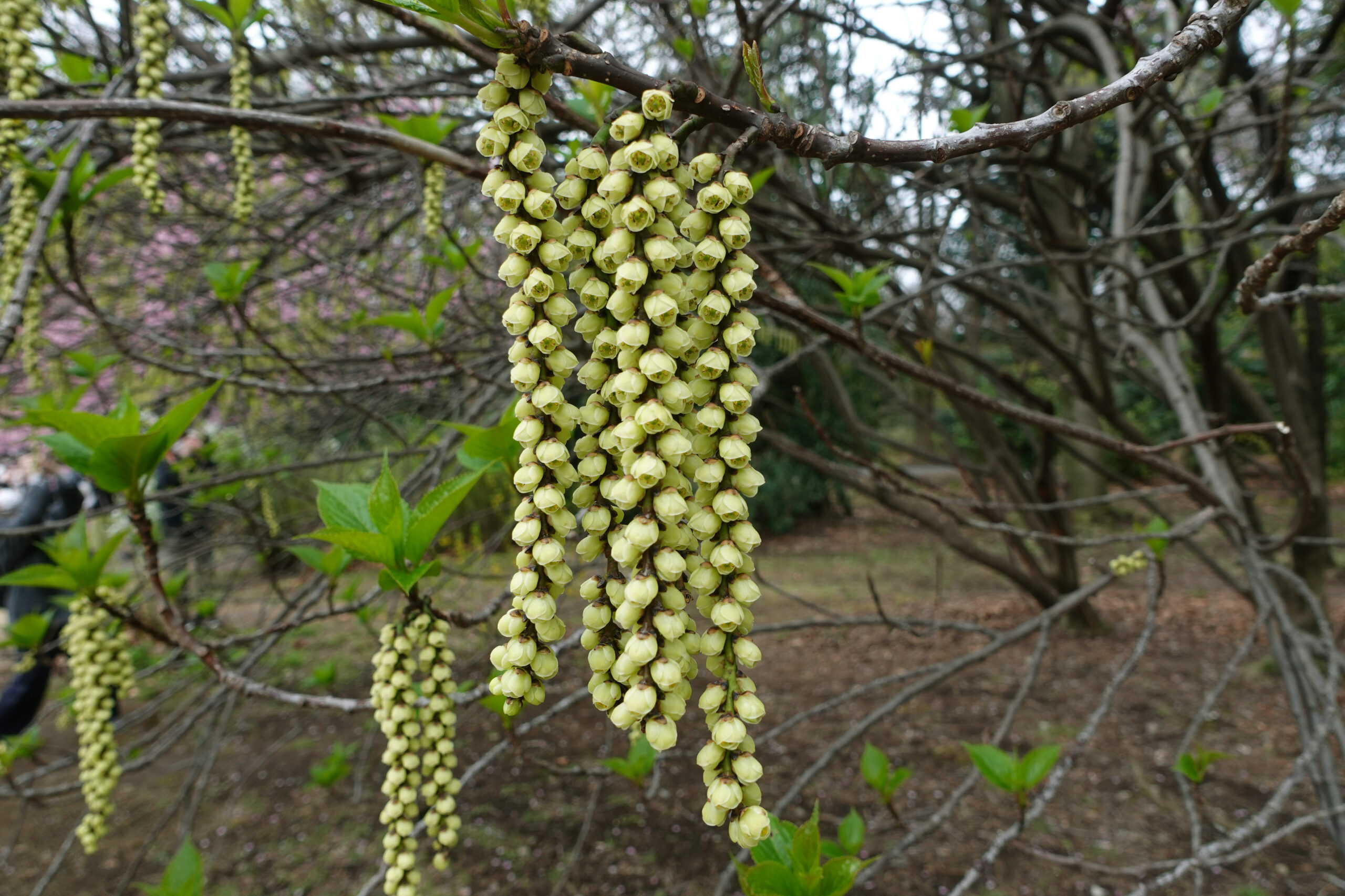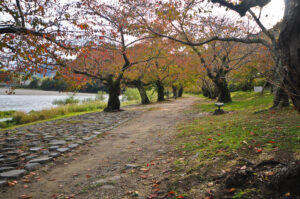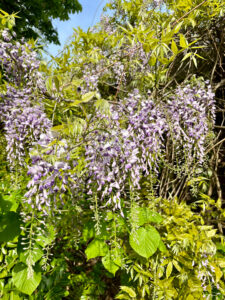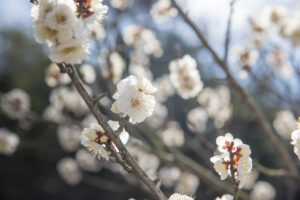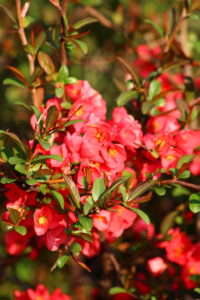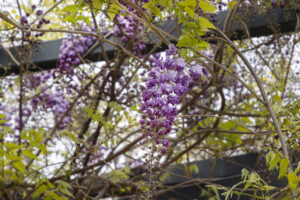As spring awakens Japan from its winter slumber, one flower stands out as a beacon of the season’s beauty—Stachyurus praecox. This unique flowering plant, native to Japan, captivates the hearts of botanists and garden enthusiasts alike with its striking blooms and rich cultural significance. In this article, we will explore the marvel of Stachyurus praecox, delving into its origin, unique features, cultural importance, and the conservation challenges it faces.
Discovering Stachyurus praecox: A Springtime Marvel
Stachyurus praecox is a deciduous shrub that thrives in the temperate climates of Japan. Known for its elegant, drooping branches and delicate clusters of flowers, this plant is an emblem of the spring season. Its unique appearance and early bloom time make it a sought-after specimen in gardens and parks. The flower clusters, often described as charming and whimsical, dangle from the branches, creating an enchanting visual effect against the backdrop of fresh green leaves.
The beauty of Stachyurus praecox is not just in its flowers but also in its contribution to the seasonal landscape. As one of the first plants to flower in spring, it heralds the arrival of warmer weather and the renewal of life. Gardeners and nature lovers eagerly anticipate its blooms, often marking the beginning of the flowering season in their regions. Growing Stachyurus praecox is a way to connect with the cycles of nature, making it a cherished addition to any garden.
In addition to its aesthetic appeal, Stachyurus praecox has garnered attention from horticulturists for its adaptability and resilience. It can thrive in various soil types and can tolerate some shade, making it accessible for planting in diverse environments. This adaptability has allowed it to flourish not only in its native habitat but also in cultivation across other temperate regions.
The shrub’s popularity has led to a growing interest among gardeners and landscaping professionals. Many are drawn to its unique form and the delightful transition it brings to the garden as it blooms ahead of many other plants. This early display of floral vibrancy has established Stachyurus praecox as a springtime marvel that offers both beauty and a sense of hope.
As we explore the unique characteristics of Stachyurus praecox, it becomes evident that it is more than just a pretty flower. Its significance in the natural world, along with its role in local ecosystems, makes it a noteworthy subject for conservation efforts. By understanding and appreciating this plant, we can also recognize the importance of preserving its habitat for future generations.
In summary, Stachyurus praecox is a remarkable flowering shrub that symbolizes the arrival of spring in Japan. Its distinct appearance, early bloom time, and adaptability have earned it a place in gardens and landscapes, making it a beloved springtime marvel worth celebrating.
Origin and Habitat: Where Stachyurus praecox Thrives
Stachyurus praecox is primarily found in the mountainous regions of Japan, including Honshu, Shikoku, and Kyushu. It typically thrives in moist, well-drained soils at elevations ranging from 500 to 1,200 meters. Its natural habitat includes deciduous forests and thickets, where it plays a vital role in the local ecosystem.
The plant’s preference for dappled sunlight makes it a common sight in shaded areas of forests, where it can grow alongside other native flora. Its ability to adapt to different soil types—from sandy loam to clay—has contributed to its widespread distribution in its native range. The cool and temperate climate of these regions provides the ideal conditions for Stachyurus praecox to flourish.
Historically, this shrub has been valued not only for its beauty but also for its ecological contributions. Its flowers attract a variety of pollinators, including bees and butterflies, which are essential for maintaining healthy ecosystems. Additionally, its foliage provides shelter for small birds and insects, enhancing biodiversity in its native habitat.
As urbanization and agricultural expansion continue in Japan, the natural habitats of Stachyurus praecox have become increasingly threatened. The destruction of forests and natural landscapes poses significant risks to its populations, which has raised concerns among conservationists and botanists. Protecting the areas where this plant thrives is critical to ensuring its survival.
In cultivated settings, Stachyurus praecox is often planted in gardens and parks, where it can be appreciated for its aesthetic qualities. However, replicating its natural habitat in these settings is essential for its successful growth. Gardeners aiming to cultivate this unique plant should consider factors such as soil composition and light exposure to mimic its preferred environment.
Despite the challenges facing Stachyurus praecox in the wild, efforts are underway to conserve its natural habitats and promote sustainable gardening practices. By raising awareness of this beautiful plant and its ecological importance, we can help safeguard its future in both natural and cultivated landscapes.
Unique Features: What Sets Stachyurus praecox Apart
One of the most distinctive features of Stachyurus praecox is its elegant, pendulous flower clusters. The flowers, which emerge before the leaves, hang gracefully from the branches, creating a striking visual display. Each cluster consists of numerous small, tubular flowers that contribute to its enchanting appearance, making it a favorite among photographers and nature enthusiasts.
The shrub can reach heights of up to 2 meters, with a spread of approximately 1.5 meters, making it a manageable size for home gardens. Unlike many other flowering plants, the bloom of Stachyurus praecox is not only visually appealing but also emits a subtle fragrance that adds to the sensory experience of spring.
Another unique aspect of this plant is its ability to thrive in various growing conditions. While it prefers moist, well-drained soil, it can tolerate periods of drought once established. This resilience makes it an attractive option for gardeners in diverse climates, allowing for greater flexibility in planting design.
The foliage of Stachyurus praecox is equally captivating, featuring deep green leaves that provide a lush backdrop for the flowering display. The leaves are ovate in shape, with a serrated edge, contributing to the plant’s overall ornamental value. As the seasons change, the foliage may exhibit subtle color variations, further enhancing its appeal.
In addition to its aesthetic qualities, Stachyurus praecox is known for its ecological significance. The plant serves as a crucial food source for pollinators during the early spring months, when other food sources may be scarce. This role in supporting local wildlife is an essential aspect of its unique identity, underscoring the interconnectedness of plants and the ecosystems they inhabit.
The combination of these unique features makes Stachyurus praecox a remarkable addition to any garden or landscape. Its early blooms, resilience, and ecological contributions highlight its importance in both cultivation and conservation efforts.
The Timing of Bloom: When to See Stachyurus praecox
Stachyurus praecox is one of the earliest flowering shrubs in Japan, typically blooming from late February to early April. This timing coincides with the gradual warming of temperatures and the arrival of spring, making it a herald of the new season. As the landscape shifts from winter’s starkness to spring’s vibrant growth, Stachyurus praecox stands out as an early beacon of color.
The exact timing of bloom can vary based on environmental factors such as climate, elevation, and local weather conditions. In warmer regions, the flowers may appear as early as mid-February, while in cooler areas, blooming may not begin until late March. Gardeners and nature enthusiasts eagerly await these blooms, often planning visits to parks and gardens to witness this splendid display.
The early bloom time of Stachyurus praecox means it can be enjoyed alongside other early spring flowers, such as cherry blossoms and magnolias. This period of overlapping blooms creates a stunning tapestry of color in gardens and natural landscapes, attracting visitors and photographers captivated by the beauty of the season.
Witnessing the bloom of Stachyurus praecox also serves as an important reminder of nature’s cycles and the resilience of life. As other plants begin to awaken from their winter dormancy, the early flowers provide essential resources for pollinators that emerge at the same time, reinforcing the interconnectedness of the ecosystem.
For those interested in cultivating Stachyurus praecox, understanding its bloom time is crucial for planning and care. Proper timing of pruning and fertilization can enhance flowering and overall plant health, ensuring a vibrant display each spring. This knowledge helps gardeners maximize their enjoyment of this beautiful shrub and contributes to its successful cultivation.
In summary, the bloom of Stachyurus praecox is a fascinating phenomenon that signals the arrival of spring in Japan. Its timing, ecological significance, and visual appeal make it an essential element of the seasonal landscape, celebrated by both locals and visitors alike.
Color Palette: The Blossoms of Stachyurus praecox
The flowers of Stachyurus praecox are a delicate yellow-green hue, often described as resembling tiny bells hanging from the branches. This gentle color palette adds a sense of warmth and cheer to gardens during the early spring months when vibrant colors are still relatively scarce. The subtlety of their shade harmonizes beautifully with the fresh greens of new foliage, creating a serene and inviting atmosphere.
Each cluster consists of numerous small flowers that contribute to a cascading effect, giving the appearance of a shower of blossoms. As the flowers mature, they may shift slightly in color, adding depth and intrigue to the overall display. This gentle transformation throughout the blooming period captivates onlookers, encouraging them to appreciate the delicate nuances of nature.
The understated beauty of Stachyurus praecox’s blooms allows them to complement a wide range of garden styles. Whether planted in a traditional Japanese garden, a modern landscape, or a cottage-style setting, the soft colors of these flowers work harmoniously with other plants, creating a cohesive and soothing visual experience.
In addition to their beauty, the flowers of Stachyurus praecox attract a variety of pollinators, including bees and butterflies, which are drawn to their nectar. This interaction enhances the ecological role of the plant and contributes to the biodiversity of the surrounding environment. The presence of pollinators in the garden further emphasizes the importance of incorporating flowering plants like Stachyurus praecox into landscapes.
As the spring progresses and the blooms begin to fade, the rich green foliage takes center stage, providing ongoing visual interest. The transition from flower to leaf demonstrates the plant’s ability to contribute to the garden’s aesthetic throughout the growing season, making it a valuable addition to any collection.
Ultimately, the color palette of Stachyurus praecox is a reflection of nature’s elegance and complexity. Its blooms serve as a gentle reminder of the beauty found in subtlety, making it a cherished symbol of spring in Japan. Gardeners seeking to create a tranquil and inviting space will find that this flowering shrub offers an exquisite touch to their landscapes.
Cultural Significance in Japan: A Floral Symbolism
In Japanese culture, flowers hold deep symbolism, and Stachyurus praecox is no exception. Often associated with the arrival of spring and renewal, this flowering shrub represents hope, resilience, and the fleeting beauty of life. Its early blooms signal the end of winter, inviting people to embrace the warmth and vitality of the new season.
The plant’s Japanese name, "Kikuzaki," reflects its cultural relevance, often celebrated in poetry and traditional art. In various literary works, Stachyurus praecox serves as a metaphor for transition and change, symbolizing the cyclical nature of life. This connection to nature resonates deeply with the Japanese philosophy of appreciating the beauty of impermanence, known as "mono no aware," which highlights the transient nature of existence.
During the spring season, Stachyurus praecox is often featured in local festivals and celebrations. Communities come together to admire the blossoms, celebrating the joy and beauty of nature. These festivals serve as an opportunity for people to connect with their cultural heritage, fostering a sense of belonging and appreciation for the natural world.
In addition to its symbolic meanings, Stachyurus praecox has historical significance in traditional Japanese gardens. Garden designers often incorporate this flowering shrub to create harmonious landscapes that evoke feelings of tranquility and reflection. Its graceful form and delicate blooms contribute to the overall aesthetic and spiritual experience of a garden space.
Furthermore, the cultivation of Stachyurus praecox reflects the Japanese tradition of nurturing nature. By tending to these plants and celebrating their blooms, people forge a deeper connection with the environment, reinforcing the notion of stewardship and respect for the natural world.
Overall, the cultural significance of Stachyurus praecox in Japan goes beyond its beauty. It embodies the spirit of spring, resonates with philosophical themes, and plays an essential role in traditional celebrations, making it a cherished symbol of the season.
Care and Cultivation: Growing Stachyurus praecox at Home
Growing Stachyurus praecox at home can be a rewarding experience for gardeners looking to add a unique flowering shrub to their landscape. To ensure successful cultivation, it is essential to consider factors such as soil, sunlight, and watering requirements. By providing the right conditions, this plant can thrive and produce stunning blooms year after year.
When planting Stachyurus praecox, select a location that receives partial shade to full sun. While the plant can tolerate some shade, it performs best in areas with dappled sunlight. The soil should be well-drained and rich in organic matter, as this will promote healthy root development and flowering. Amending the soil with compost can enhance its fertility and drainage.
Watering is an important aspect of care, especially during the plant’s establishment period. Newly planted Stachyurus praecox should be watered regularly to keep the soil consistently moist but not waterlogged. Once established, the shrub is relatively drought-tolerant, requiring less frequent watering. However, during prolonged dry spells, providing supplemental water will help maintain its health.
Pruning is another essential aspect of maintaining Stachyurus praecox. To encourage a bushier growth habit and promote airflow, it is recommended to prune the shrub after flowering. This allows the plant to focus its energy on new growth and helps prevent the development of diseases. A light pruning in late winter or early spring can also enhance its shape and overall appearance.
Fertilizing Stachyurus praecox can enhance blooming and overall vigor. Applying a balanced, slow-release fertilizer in early spring can provide the necessary nutrients for healthy growth. However, it is crucial to avoid over-fertilization, as this can lead to excessive foliage growth at the expense of blooms.
In terms of pest and disease management, Stachyurus praecox is generally resistant. However, it is always wise to monitor for common pests such as aphids or spider mites. If detected, organic pest control methods can be employed to manage infestations without harming the plant or the surrounding environment.
By following these care guidelines, gardeners can cultivate a thriving Stachyurus praecox that enhances their outdoor space. With its early blooms and charming form, this unique shrub can become a focal point in any garden, bringing the beauty of spring to life.
Landscape Uses: Incorporating Stachyurus in Gardens
Stachyurus praecox offers versatile landscape uses that can enhance various garden designs. Its graceful form and early blooms make it an attractive choice for both formal and informal settings. Gardeners can incorporate this flowering shrub to create visually appealing focal points, borders, and seasonal interest in their landscapes.
One popular application is using Stachyurus praecox as a specimen plant. Its distinctive flowering habit and elegant shape make it a standout in any garden. Placing the shrub in a prominent location allows it to be appreciated from multiple angles, drawing attention to its delicate blooms and lush foliage.
In addition to serving as a specimen, Stachyurus praecox can be effectively used in mixed borders. Combining this shrub with other flowering plants, such as early-blooming perennials and spring-flowering bulbs, creates a vibrant tapestry of color and texture. The soft yellow-green flowers of Stachyurus complement a wide range of other hues, making it a versatile companion in the garden.
For those looking to establish a woodland garden, Stachyurus praecox is an excellent choice. Its preference for partial shade allows it to thrive in dappled light under the canopy of taller trees. Planting it among ferns, hostas, and other shade-loving plants creates a serene and harmonious environment that showcases the beauty of nature.
Stachyurus praecox can also be used as a hedge or informal screen in the landscape. When planted in groups, these shrubs can form a lush, flowering barrier that provides privacy while adding aesthetic value. This application is particularly beneficial in urban settings, where green spaces can be limited.
Additionally, the ecological benefits of Stachyurus praecox should not be overlooked. By incorporating this plant into gardens, gardeners can support local wildlife, providing essential food and habitat for pollinators and birds. Creating a biodiverse landscape fosters a healthier ecosystem and encourages a greater appreciation for nature.
In conclusion, the landscape uses of Stachyurus praecox are diverse and impactful. By thoughtfully incorporating this flowering shrub into garden designs, gardeners can enhance aesthetic appeal, promote biodiversity, and celebrate the beauty of spring.
Ecological Benefits: Supporting Local Wildlife with Stachyurus
Stachyurus praecox plays a vital role in supporting local wildlife, making it an important addition to any garden or landscape. Its early blooms provide a critical food source for pollinators, including bees and butterflies, during a time when other floral resources may be scarce. The availability of nectar in early spring is essential for these insects, contributing to their health and well-being.
Beyond attracting pollinators, Stachyurus praecox also provides habitat for small birds and beneficial insects. The dense foliage offers shelter and nesting sites, creating a sanctuary that supports a diverse range of wildlife. This ecological benefit enhances the overall biodiversity of the garden, fostering a balanced ecosystem where different species can thrive.
Incorporating Stachyurus praecox into landscapes promotes a healthy food web, where various organisms interact and depend on one another for survival. The presence of pollinators leads to successful plant reproduction, which in turn provides food and habitat for other species, creating a harmonious cycle of life.
Furthermore, the cultivation of native plants like Stachyurus praecox helps preserve local ecosystems. As urbanization and habitat loss continue to threaten native species, planting and promoting indigenous flora can restore ecological balance and support conservation efforts. This commitment to biodiversity is essential for the resilience of local ecosystems.
Gardening with ecological benefits in mind not only enhances the beauty of the landscape but also fosters a sense of stewardship and responsibility towards the natural environment. By creating spaces that support wildlife, gardeners contribute to the health of the planet and encourage others to appreciate the importance of biodiversity.
In summary, Stachyurus praecox is not just a beautiful flowering shrub; it is a significant contributor to local ecosystems. By providing food and habitat for pollinators and other wildlife, this plant enriches gardens and landscapes while supporting the delicate balance of nature.
Challenges Facing Stachyurus praecox in the Wild
Despite its beauty and ecological significance, Stachyurus praecox faces several challenges in its native habitat. The most pressing issue is habitat loss due to urbanization and agricultural expansion. As forests and natural landscapes are cleared for development, the natural homes of Stachyurus praecox are increasingly threatened, leading to declining populations in the wild.
Climate change poses another significant risk to this flowering shrub. Altered weather patterns, including fluctuating temperatures and changing precipitation levels, can disrupt its blooming cycle and affect its growth. These changes may lead to mismatches between the timing of flowering and the availability of pollinators,
